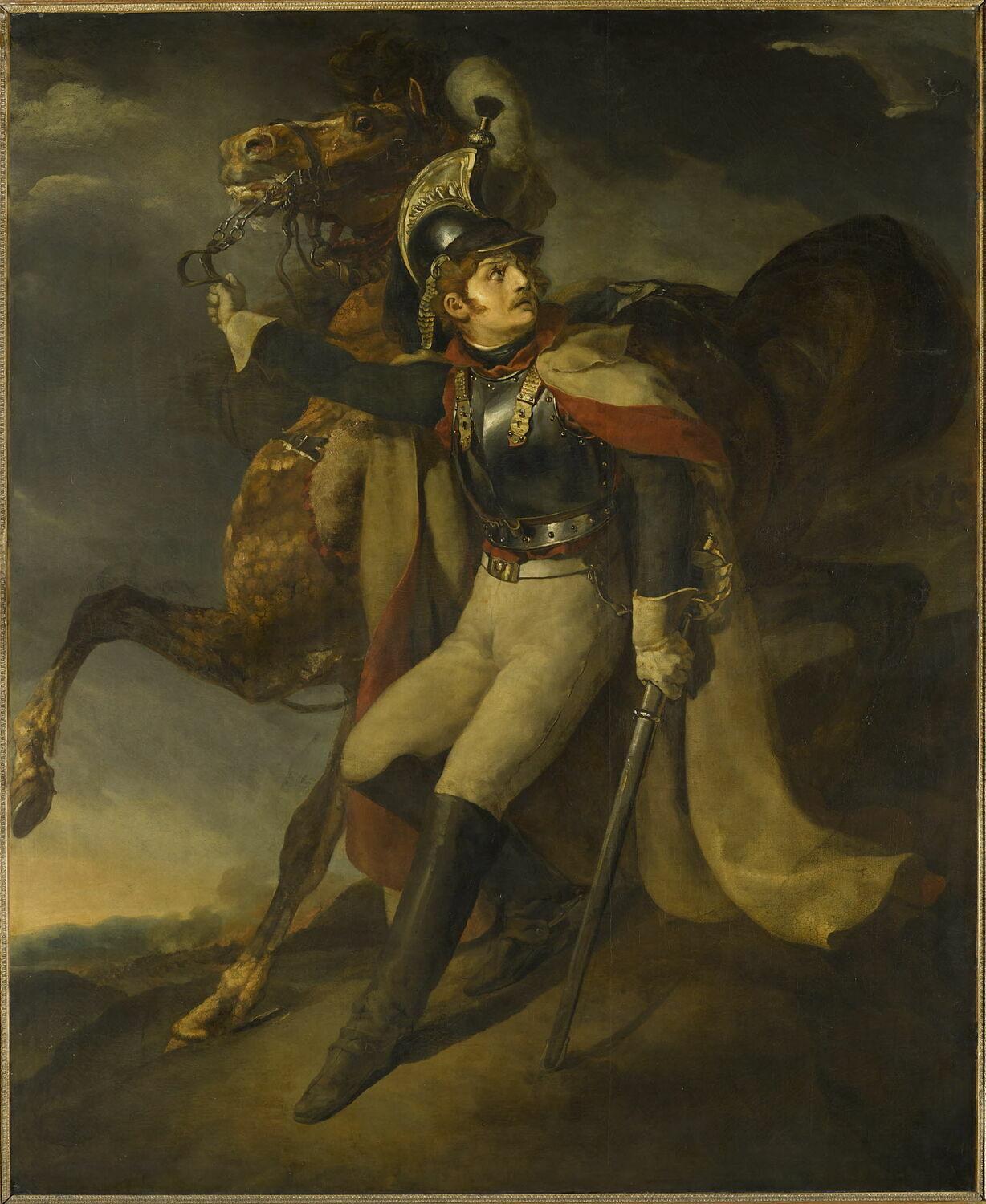Cuirassier blessé, quittant le feu by Théodore Géricault
Art Analysis: Wounded Cuirassier Leaving the Fire (1814)
Artist: Théodore Géricault
Title (French): Cuirassier blessé, quittant le feu
Year: 1814

Historical Context
This striking painting was created in the aftermath of Napoleon’s military failures. Painted when Géricault was just 23, it was exhibited at the 1814 Paris Salon. Departing from heroic battle scenes, the painting reflects a moment of retreat and internal turmoil.
Composition & Symbolism
1. The Figure of the Cuirassier
The soldier stands wounded, glancing over his shoulder with a mix of fear and exhaustion. His shining armor contrasts with his inner vulnerability. The sword at his side remains sheathed — he is no longer fighting, but surviving. His twisted posture adds a dramatic sense of movement and strain.
2. The Horse
The horse is wild-eyed and rearing, clearly panicked. Its agitation echoes the emotional chaos of battle. Unlike the noble, composed steeds often seen in military portraits, this horse embodies fear and trauma.
Color Palette & Lighting
Géricault employs a dark, earthy palette, with strong shadows and muted highlights. This chiaroscuro technique draws the viewer’s attention to the soldier’s face and armor, emphasizing his humanity and the personal cost of war.
Romanticism in Action
As an early Romantic painter, Géricault favored emotion over idealism. This work is not about national pride, but about the individual experience of suffering. It shows a soldier not as a symbol of glory, but of vulnerability.
Subtle Political Undertones
Created shortly after Napoleon’s fall, the painting can be read as a quiet critique of the glorification of war. Rather than celebrating military might, Géricault presents us with a somber portrait of loss and survival.
Conclusion
Wounded Cuirassier Leaving the Fire transforms personal retreat into a universal meditation on fear, defeat, and humanity. It is a poignant and timeless reminder of the emotional scars left by war—setting the stage for Géricault’s later masterpiece, The Raft of the Medusa.
Comments
Post a Comment